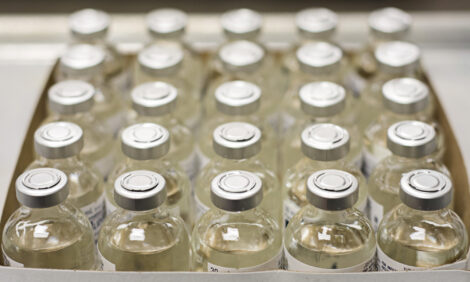



Institute for Animal Health to Focus on Virology
UK - The Institute for Animal Health ( IAH ), an institute of the Biotechnology and Biological Sciences Research Council ( BBSRC ), has announced a new science strategy that will see the focusing of its research effort on viruses affecting livestock and poultry, together with supporting scientific disciplines.The strategy will maintain IAH as a world-class centre for animal health research and will ensure that it has the skills and capabilities to work on viral diseases affecting all of the UK’s economically important livestock species – cattle, poultry, sheep and pigs.
IAH will also accelerate the move of virus research currently at its Compton site to its Pirbright Laboratory. The Government and BBSRC recently announced £100M of funding to redevelop the Pirbright Laboratory into a world-leading facility.
The new laboratory complex at IAH Pirbright will be completed in 2013. By combining virus research at Compton, on diseases such as avian flu and Marek’s disease, with established research at Pirbright on diseases such as bluetongue, foot-and-mouth disease and African horse sickness, IAH will be better placed to enhance its position as a national UK centre of excellence in tackling diseases that threaten the UK’s economy and wellbeing. The greater scientific focus by the Institute as a world-class animal health hub, centred on Pirbright, will be augmented by stronger partnerships with universities, vet schools, Government agencies and the private sector.
Virus research from Compton, and associated supporting disciplines, will transfer to Pirbright as soon as possible, and by spring 2013 at latest, to ensure that the best research is being done in the best facilities, and to ensure that there is no capability gap. Research on bacteria and parasites of animals currently conducted at IAH Compton will no longer be pursued by the Institute. IAH will be working with the scientists in these areas to explore fully how this research can be supported at other institutions. Once the virology research has transferred and current bacteriology and parasitology projects have completed by spring 2013, it is intended that the Compton site will close.
Professor Martin Shirley, IAH Director, said: “Most of the diseases that have emerged in the last 25 years have been viral. There is no reason to believe that emerging diseases in the coming decades will be any different. Animal diseases threaten the economy, UK agriculture and present increasing concerns to human health, if viruses are able to jump species, like swine flu. IAH is a world-class institute and our new science strategy, together with the recently announced funding for the redevelopment of Pirbright, means we are well placed to be the UK hub for tackling current and emerging animal health challenges.
“IAH cannot do everything. But what we can do is concentrate on the diseases that pose the biggest threat to the UK and the animals that are important to our farmers and consumers, while maintaining the flexibility to respond to new challenges.”
Professor Douglas Kell, BBSRC Chief Executive, said: “The new facilities at Pirbright and the new, focused science strategy mean that IAH will be the partner of choice for public, private and academic researchers. IAH will be at the national centre of a hub of animal health research which will deliver international quality science alongside the ability to help defend the UK from viral animal disease.”








